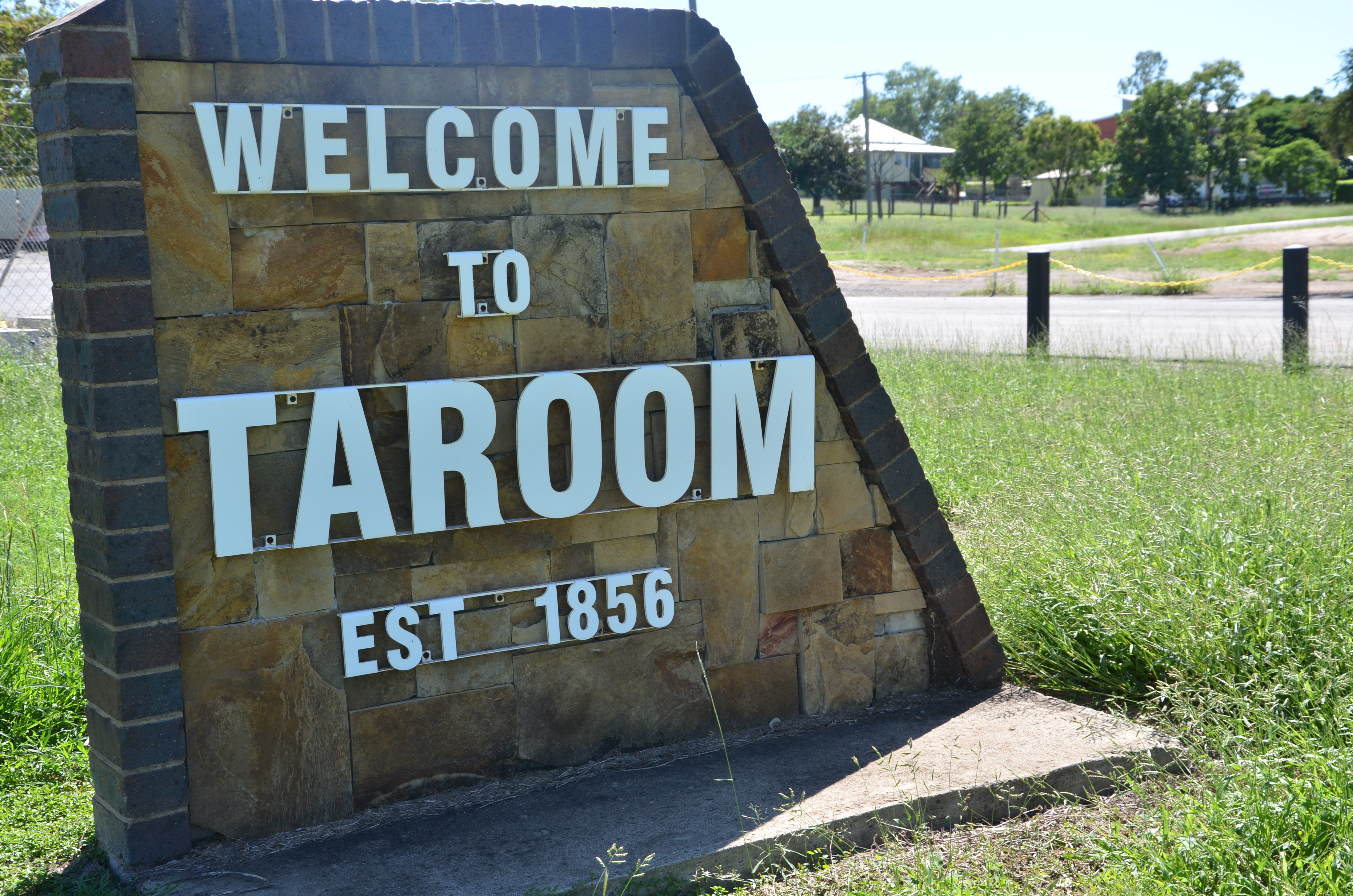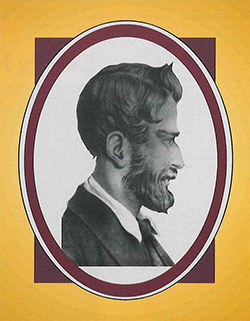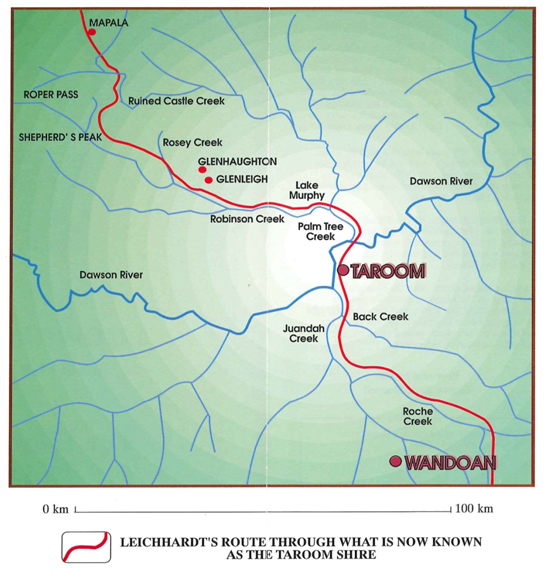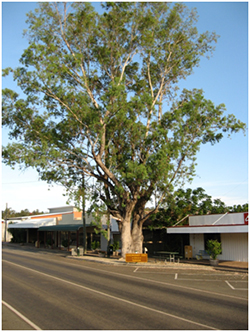Ludwig Leichhardt and Banana Shire

Ludwig Leichhardt and Banana Shire
Ludwig Leichhardt and Banana Shire
 Friedrich Wilhelm Ludwig Leichhardt's journey in 1844 resonates strongly with the residents of Banana Shire, and particularly those in the southern end around Taroom.
Friedrich Wilhelm Ludwig Leichhardt's journey in 1844 resonates strongly with the residents of Banana Shire, and particularly those in the southern end around Taroom.
Born in Trebatsch, Prussia, in 1813, Leichhardt studied at the Universities of Berlin, Gottingen and institutions in London and Paris. Initially a linguist, Leichhardt had a consuming passion for natural sciences and transferred his studies to the Faculty of Medicine which was the only faculty teaching natural sciences.
Drawn to Australia by the exciting opportunities that Australia had to offer in terms of science, Leichhardt departed for Sydney in October, 1841. John Nicholson, a wealthy British student who befriended Leichhardt in his student days, funded his journey to Australia. Disappointed in his various efforts to gain employment in New South Wales, Leichhardt occupied himself with collecting and gathering data.
When the New South Wales Government decided that the establishment of an overland route between settled parts of New South Wales and Port Essington would advantage the colony by opening a direct line of communication with the islands of the eastern archipelago, India and other parts of Asia, Leichhardt was anxious to take part.
The Governor, short of funds, referred the matter to London, but public pressure and a newspaper campaign mentioning Leichhardt as the ideal leader, ensured the expedition went ahead. The expedition was privately funded, although contributions came in both money and in kind. Leichhardt saw this opportunity as a way to increase the country's scientific knowledge, but more importantly, to establish a feasible trade route for the future commerce of the booming agricultural industry. He took on the role of leader, naturalist, botanist, surveyor, navigator, meteorologist, illustrator, geologist, linguist and on occasion, palaeontologist.
The final party consisted of ten men and they set out from Jimbour Station on the 1st October, 1844 with 16 head of cattle, 17 horses and 4 kangaroo dogs. A further 2 horses joined the party about 70 miles from Jimbour. Provisions included 200 pounds of flour, 200 pounds of sugar, 80 pounds of tea and 20 pounds of gelatine, as well as 30 pounds of gun powder and 8 bags of shots.
These were the first non-indigenous men to see the Upper Dawson country. Leichhardt and his party spent several weeks traversing the Upper Dawson area and first saw what was to become Taroom Shire from near the headwaters of Dogwood Creek on the 26 October, when the party found themselves overlooking a valley full of impassable brigalow scrub. They were on a flat topped ridge which was some 80 to 100 feet above the valley. This brigalow forced them to head further east.
On 28 October, 1844, they camped for six days near a creek which they named Dried Beef Creek (now known as Back Creek) after the slaughtering of a bullock and sun-drying the meat. It became evident to Leichhardt that the group would have problems finding sufficient game to feed the party. They needed to reduce the members, so Hodgson, a Darling Downs squatter, and Caleb, an African American, departed.
Leichhardt noted in his diary on the 5th November that ‘they had travelled through open undulating country for some miles and then followed a considerable creek that flowed westward through a flood plain bounded by ridges clothed with a forest of silver-leaved ironbark'. Leichhardt named this watercourse the Dawson River after expedition support, Robert Dawson of Black Creek, who donated a bullock to the expedition. Today it is known as Roche Creek.

The party continued their journey noting flora and fauna along the way. On 11 November, they camped at a waterhole they named Pelican Water Hole. Leichhardt and Gilbert rode to the top of a clear hill (Bonners Knob now referred to as Convent Hill or Gilberts Lookout) where they had a vista of a long range of mountains. Gilbert was very impressed with the view from this hill and wrote:
"One of the most beautifully picturesque and extensive scenes met our anxious gaze. The immediate vicinity of the hills was like park scenery – clear undulating grassy hills, with here and there small clumps of Brigalow, while the sides of the hills were dotted with single scrubs, as if picked out by hand. Beyond this to the westward, and round as far as we could see to the ESE, was a carpet of evergreens for six or seven miles and then the high ranges rose up and formed a beautiful background to the most pleasing natural picture we have seen."
This is the first recorded description of the Dawson Valley at Taroom.
Continuing the journey over the following week, they encountered the ‘strange bottle trees', ducks, pelicans and beautiful birds. Leichhardt found a palm fringed creek running into the Dawson, and called it Palm Tree Creek. They went on to discover Lake Murphy, named after John Murphy, a teenager in the party.
In both the Dawson and Robinson rivers, fish and eels were caught to supplement their food supply. They also found and named a new variety of fish Scleropages Leichhardti, known to bushmen as barramundi or "Dawson River Salmon". These fish are really living fossils and have a rasp-like tongue and an array of teeth.
 Gilbert's notebooks included details of some of the birds seen in the area: the Darling Downs parrot (a new species); the buff coloured scrub wren (the first to be recorded); the friar bird with its variety of cries, and its nest; the plum-headed and crimson finch; pigeons, wading birds; a glucking bird; and the barking owl.
Gilbert's notebooks included details of some of the birds seen in the area: the Darling Downs parrot (a new species); the buff coloured scrub wren (the first to be recorded); the friar bird with its variety of cries, and its nest; the plum-headed and crimson finch; pigeons, wading birds; a glucking bird; and the barking owl.
John Gilbert was killed in an attack at their campsite by Aborigines in late June 1845, but the remainder of the party survived and reached Port Essington, near Darwin, on 17 December 1845, after a marathon journey of 3,000 miles.
In Taroom's main street, Yaldwyn Street, stands a large coolabah tree, marked LL 1844. In 1916, one L and part of the year 1844 were still distinguishable, but bark has since grown over part of the date and the second L.
In the mid-1970s, the blaze was just discernible although unreadable, but it is no longer decipherable. A plaque has been fixed to the trunk of the tree engraved: Leichhardt, the explorer, passed over this track and marked this tree in 1844'. This tree is estimated to be about 300 years old.
Summary
Overall, Leichhardt's passage through the Taroom district was a significant element of his 1844-45 expedition. There he and his men learnt to become proficient at picking their way through dense scrub, at procuring and preserving food, and at handling their bullocks and riding horses. In short, this episode constituted an important apprenticeship for coping with the demands of the ensuing 13 months.
Indeed, as Chisholm comments: "The travellers were becoming mildly resourceful. They had dried the flesh of kangaroos and eels, as well as beef; they had learnt to eat reptiles; they had discovered food of sorts in the pith of the bottle trees; and contrived to make from the leaf stalk of a plant "a strong cordage which when made up resembled the coir rope of India;" and they had obtained from the skins of emus, oil for the locks of their firearms and a salve for Leichhardt's rheumatism."
A fully detailed outline of Leichhardt's passage through the Taroom district, with the exact location of all the campsites, several of which are easily accessible to the public, can be viewed at the Information Centre in Taroom.
Camping out-of-doors, with the firelight flickering on the branches overhead and the clear, star-filled sky above, knowing that one is sleeping where Leichhardt and his men once rested while their stock grazed close-by, is indeed, a wonderful experience.
